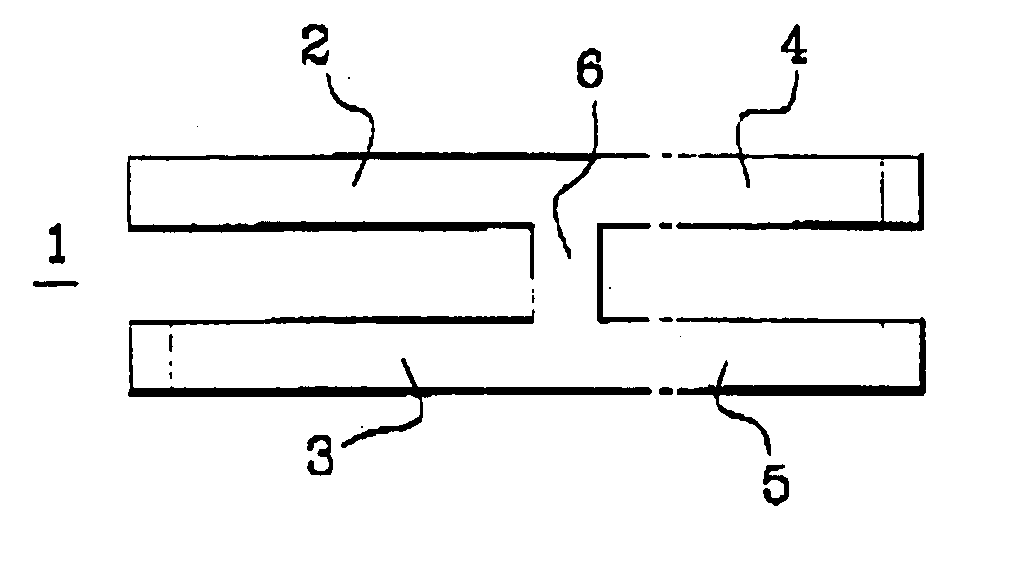Intramedullary osteosynthesis implant
a technology of osteosynthesis and implants, applied in the direction of staples, nails, applications, etc., can solve the problems of pain, ulceration, infection, and considerable inconvenience for patients, and achieve the effect of stabilizing osteosynthesis and regulating the inclination or flexum
- Summary
- Abstract
- Description
- Claims
- Application Information
AI Technical Summary
Benefits of technology
Problems solved by technology
Method used
Image
Examples
Embodiment Construction
[0055] The arthrodesis implant (1) illustrated in FIG. 1 comprises two pairs of rods (2, 3, 4, 5) which are substantially parallel and are connected to a central portion (6) in such a way that the implant (1) has a general H-shape.
[0056] The implant illustrated in FIG. 1 is used especially for arthrodesis of the distal interphalangeal joint of the hands and the proximal interphalangeal joints of the toes. This implant has a total length of the order of 14 millimeters.
[0057] The total width of the implant (1), in the configuration at ambient temperature illustrated in FIG. 1, is of the order of 4.5 millimeters. Each rod has a width of the order of 1.1 millimeter. The rods of the same pair are separated by a space of the order of 4.5 millimeters.
[0058] In the form illustrated, the rods (2, 3) intended to be impacted in the joint or the proximal diaphysis are slightly longer than the rods (4, 5) intended to be impacted in the joint or the distal diaphysis. More precisely, in the exa...
PUM
 Login to View More
Login to View More Abstract
Description
Claims
Application Information
 Login to View More
Login to View More - R&D
- Intellectual Property
- Life Sciences
- Materials
- Tech Scout
- Unparalleled Data Quality
- Higher Quality Content
- 60% Fewer Hallucinations
Browse by: Latest US Patents, China's latest patents, Technical Efficacy Thesaurus, Application Domain, Technology Topic, Popular Technical Reports.
© 2025 PatSnap. All rights reserved.Legal|Privacy policy|Modern Slavery Act Transparency Statement|Sitemap|About US| Contact US: help@patsnap.com



